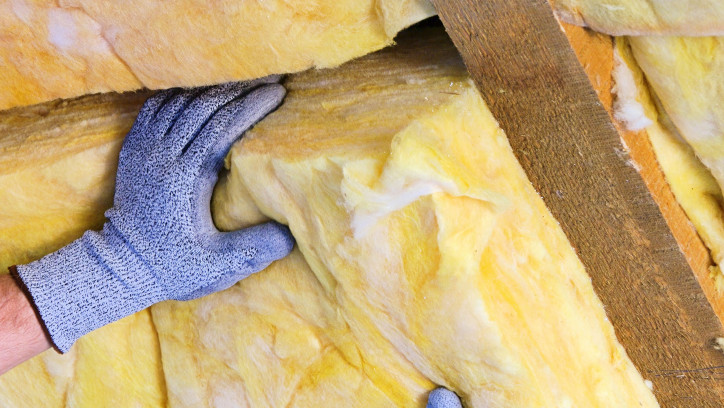Installing insulation
Last updated: 31 March 2025

Proper installation is critical for ensuring insulation works (avoid gaps as they allow warm air to bypass the insulation and escape).
Installing insulation – avoid the pitfalls
You can fit some types of insulation, such as blanket insulation, yourself. Others, such as loose fill, will need a professional installer.
Retrofitting insulation in external walls requires either a building consent or a discretionary exemption from the territorial authority.
Checking out your insulation
It's wise to check on the state of your current insulation, whether you've just had it installed or you want to check on it after working in the area. For example, if you have had electricians in, or someone installing a ducted heat transfer or ventilation system, they may have moved your insulation and forgotten to replace it.
There are some health and safety things to be aware of when checking your insulation – for starters, you'll need to climb into your ceiling space and crawl under your house, so you’ll need to be aware of hazards such as electrical wiring, heat, asbestos and falling. Make sure someone else is at home while you are doing it and the electrical power to the house is switched off.
Energy efficiency – Installing bulk thermal insulation in residential buildings is the New Zealand Standard that provides guidance on the correct installation of insulation, and is available on the Tenancy Services website.
Check in your ceiling and under your floor to see:
- whether there is already any insulation
- how thick existing insulation is (if it's not thick enough, you may need to top it up. A general rule of thumb is that ceiling insulation should be at least 120mm thick, ie higher than the timber framing)
- whether it is gap-free (there should not be any visible gaps between the insulation and the ceiling joists or at joins of insulation pieces, and no sections of insulation should be compressed or overly squashed, especially in attic spaces which are used for storage)
- whether underfloor insulation is flush against the flooring
- whether it is dry (damp insulation is much less effective. You'll need to fix the source of any moisture, and remove and replace the affected insulation)
- any signs of bird or rodent nests or droppings that can damage your insulation. Get the infestation sorted, and remove and replace the affected insulation
- whether it covers the whole area (if you’re able to access it)
- whether it’s clear of any old downlights. For fire safety reasons, there must be a 100mm safety gap around downlights that are not CA, Insulation Contact (IC) and Insulation Contact – Fire Resistant (IC-F) rated and other heat sources – it's really important to check this occasionally and get it sorted.
Downlights and recessed lighting has more information.
Wall insulation cannot be easily inspected without removing either the external cladding or the internal wall lining. If you are removing either or both of these, take the opportunity to check the insulation’s thickness and dryness, and to look for gaps or slumping. Retrofitting insulation in external walls requires either a building consent or a discretionary exemption from the territorial authority.
Common installation problems
Common insulation installation issues include:
- folds
- tucks
- gaps
- compression of insulation material
- missing insulation
- lack of a gap to the roof underlay
- failing to ensure the moisture content of timber is less than 16 per cent prior to installation
- covering old recessed downlights and auxiliary equipment with insulation
- installing insulation within 50mm of brick chimneys or extractor fans (or 200mm for unducted extractor fans), or within 75mm of metal chimneys or flues.
Poor installation affects the R-value of the insulation, which means it will not perform well and may not even meet minimum New Zealand Building Code requirements.
DIY installation
Installing insulation yourself may be a cheaper option, but:
- it can be slow and hot work
- you may need to access small spaces
- it can be difficult to get a quality installation that will provide effective insulation.
If you decide to do it yourself, read the relevant Standard and guidance:
NZS 4246:2016 Energy efficiency – Installing bulk thermal insulation in residential buildings can be found on the Tenancy Services website.
Insulation requirements under the RTA on the Tenancy Services website has more information.
Insulate your home on the Gen Less website.
Professional installation
You can also talk to your insulation supplier or call in a professional installer. They can give you recommendations on the right insulation solution for your home, and a quality, professional installation will ensure the insulation works properly and is safe.
The cost for professionally installed insulation is probably a bit higher than doing it yourself – though often not by much.
The Community Energy Network have trained experts who can check out your ceiling and underfloor, and will talk with you about your best options.
Otherwise, look for an installer who follows insulation Standard NZS 4246, and has completed the insulation installer training of the Insulation Association of New Zealand (IAONZ).
Check they've done a proper job once the insulation is installed.